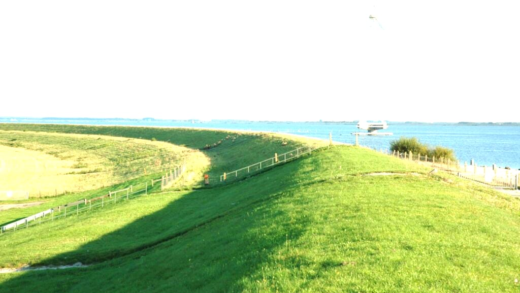Sheepshead fish thrive in coastal waters, especially around rocky reefs and estuaries. Their unique teeth resemble human molars, allowing them to crush hard-shelled prey. Effective fishing techniques include using live bait and targeting specific habitats. Sheepshead play a vital role in their ecosystem by controlling prey populations and serving as a food source for larger predators. Myths surrounding them often misrepresent their diet and edibility, highlighting the need for accurate information.
Where to Find Sheepshead Fish
Sheepshead fish thrive in a variety of habitats, primarily found in coastal waters of the Atlantic Ocean and the Gulf of Mexico. Their preferred environments include:
- Rocky Reefs: These fish enjoy the structure provided by rocky reefs where they can hide from predators.
- Estuaries: Sheepshead are often spotted in estuaries, where freshwater mixes with saltwater, providing a rich feeding ground.
- Grass Beds: Seagrass beds are another favorite spot, as these areas are abundant in crustaceans and other prey.
- Piers and Jetties: Anglers often find sheepshead around piers and jetties, where they can easily access food sources.
Understanding the sheepshead fish habitat is crucial for both conservation efforts and fishing practices. By identifying their preferred environments, fishermen can target these locations for a successful catch.
The Human-Like Teeth
Sheepshead fish are renowned for their unique teeth that bear a striking resemblance to human teeth. This similarity is not merely a coincidence; it serves a significant purpose in their feeding habits. The teeth of sheepshead fish are:
- Flat and Broad: These teeth are designed to crush hard-shelled prey, much like human molars.
- Strong: Their robust structure allows them to effectively break through the shells of crustaceans.
The resemblance to human teeth is a fascinating adaptation that highlights the evolutionary path of sheepshead fish. Their unique dental structure allows them to exploit a diet rich in hard-shelled organisms, showcasing how form follows function in the animal kingdom.
Purpose of Those Teeth
The function of sheepshead fish teeth is essential for their survival. These teeth play several critical roles in their feeding habits:
- Crushing Shells: The primary purpose is to crush the shells of crabs and mollusks, making it easier for the fish to access the soft flesh inside.
- Foraging: Their teeth also aid in foraging on rocky substrates, allowing them to scrape off food items.
- Defense: While not their primary function, their formidable teeth can deter potential predators.
Understanding the purpose of sheepshead fish teeth reveals the intricate relationship between an organism’s anatomy and its ecological niche. The teeth are a perfect example of nature’s design, allowing these fish to thrive in their environment.
Teeth Comparison
When it comes to the teeth of sheepshead fish, they stand out not just for their appearance but also for their functionality. Comparing sheepshead fish teeth with those of other fish species reveals fascinating differences:
- Sheepshead vs. Snapper: Snapper have pointed teeth for catching slippery prey, while sheepshead teeth are broad and flat, ideal for crushing.
- Sheepshead vs. Grouper: Groupers possess sharp, conical teeth for grabbing and holding onto fish. In contrast, sheepshead use their flat teeth to break hard shells.
- Sheepshead vs. Pufferfish: Pufferfish have beak-like teeth for grinding. Sheepshead, however, have a more molar-like structure that allows them to efficiently access crustaceans.
This comparison highlights how different species adapt their dental structures to suit their diets and hunting methods. The unique adaptations of sheepshead fish teeth allow them to thrive in their specific ecological niche, showcasing the diversity of evolutionary strategies among marine life.
Diet Details
The sheepshead fish diet is as intriguing as its appearance. These fish are opportunistic feeders, consuming a variety of prey that reflects their adaptability:
- Crustaceans: A major part of their diet includes crabs, shrimp, and barnacles, which they can easily crush thanks to their specialized teeth.
- Mollusks: They also feed on oysters and clams, using their powerful jaws to break through tough shells.
- Plant Matter: Occasionally, sheepshead will nibble on seagrass or algae, adding a plant-based component to their diet.
Sheepshead fish employ various hunting techniques, including foraging along the sea floor and using their excellent eyesight to locate food. This diverse diet not only helps them survive but also plays a role in their ecosystem by controlling the populations of their prey.
Adaptations for Survival
Sheepshead fish have developed several remarkable adaptations that enhance their survival in challenging environments. These adaptations include:
- Teeth Structure: Their unique teeth are perfectly designed for their hard-shelled diet, allowing them to thrive where other fish might struggle.
- Camouflage: The coloration of sheepshead helps them blend into rocky environments, making it harder for predators to spot them.
- Habitat Flexibility: They can inhabit various environments, from rocky reefs to estuaries, which increases their chances of finding food and avoiding danger.
These adaptations not only enhance the survival of sheepshead fish but also underscore their important role within their ecosystems. By effectively utilizing their environment and food sources, they contribute to the health of marine habitats.
Fishing Techniques
How to catch sheepshead fish requires some skill and knowledge about their habits. Here are the best methods to successfully reel in these fascinating fish:
- Bait Selection: Use live or fresh bait like fiddler crabs, shrimp, or oysters. These baits mimic their natural diet and attract them effectively.
- Location: Target rocky reefs, piers, or jetties where sheepshead are known to congregate. They often hide in structures, so casting near these spots increases your chances.
- Timing: Fish during tidal changes or early mornings and late afternoons when they are more actively feeding.
- Technique: Employ a light tackle setup with a sensitive rod to detect subtle bites. Use a slip sinker rig to keep your bait near the bottom where sheepshead forage.
By understanding these techniques, anglers can enhance their chances of catching sheepshead fish, making it a rewarding experience.
Ecosystem Importance
The sheepshead fish ecosystem role is crucial for maintaining the balance within their habitats. Here’s how they contribute:
- Prey Control: As opportunistic feeders, sheepshead help regulate the populations of crustaceans and mollusks, preventing overpopulation and promoting biodiversity.
- Habitat Health: Their feeding habits contribute to the health of seagrass beds and reefs by controlling algae growth and facilitating nutrient cycling.
- Food Source: Sheepshead themselves serve as a food source for larger predators, playing an integral part in the marine food web.
Understanding the ecosystem role of sheepshead fish highlights their importance in preserving marine environments and ensuring a balanced aquatic ecosystem.
Myths and Facts
Several myths about sheepshead fish circulate among anglers and the general public. Here are some common misconceptions and the truths behind them:
- Myth 1: Sheepshead only eat plants. Fact: They primarily feed on crustaceans and mollusks, though they may nibble on some plant matter.
- Myth 2: Sheepshead fish are not good to eat. Fact: They are considered delicious and are sought after for their firm, white flesh.
- Myth 3: Their teeth are harmful to humans. Fact: While their teeth are strong, they are not dangerous unless provoked.
Dispelling these myths helps promote a better understanding of sheepshead fish and encourages responsible fishing practices.





Comments are closed.